Control of Microbial Growth
1/22
There's no tags or description
Looks like no tags are added yet.
Name | Mastery | Learn | Test | Matching | Spaced |
|---|
No study sessions yet.
23 Terms
Sterilization
100% destruction of all living microorganisms, including spores
Exception:
Commercial sterilization
Only eradication of spoilage and pathogenic microorganisms
Limited heat treatment → otherwise, food will lose taste and texture
Canned foods → treated for C.botulinum spores but not all spores
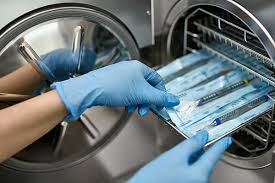
Disinfection
Control directed at destroying harmful microorganisms, especially pathogens
Use of chemical and physical methods

Antisepsis
Disinfection directed at living tissue
“Antiseptics”
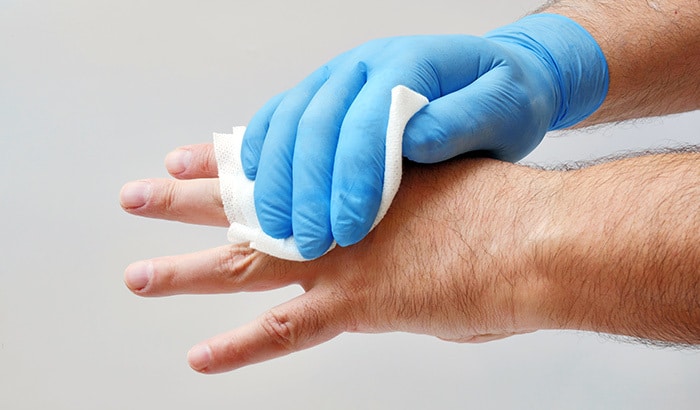
Degerming
Physical removal of microorganisms
Handwashing, babywipes

Sanitization
Lowering # of microorganisms to a safe levels → public health issue
Glassware and dishwashers in bars
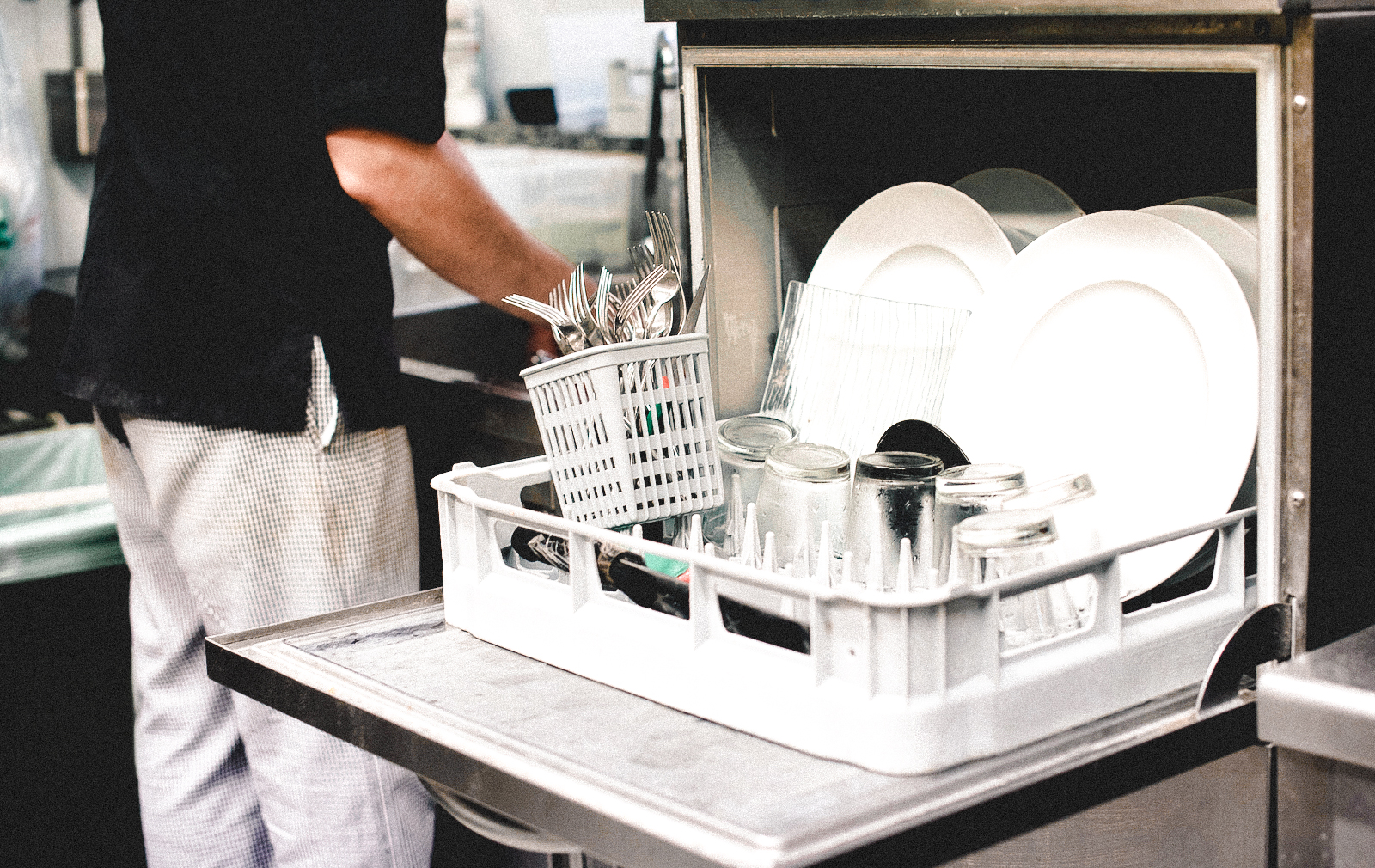
Bacteriostatic
Stops bacterial growth, once removed the bacteria can start to grow again
Bactericidal
Causing bacterial death

What factors affect bacterial death rate?
The number of microbes
Environmental conditions
In media or environmental samples
Temperature
pH
Time of exposure
Microbial characteristics
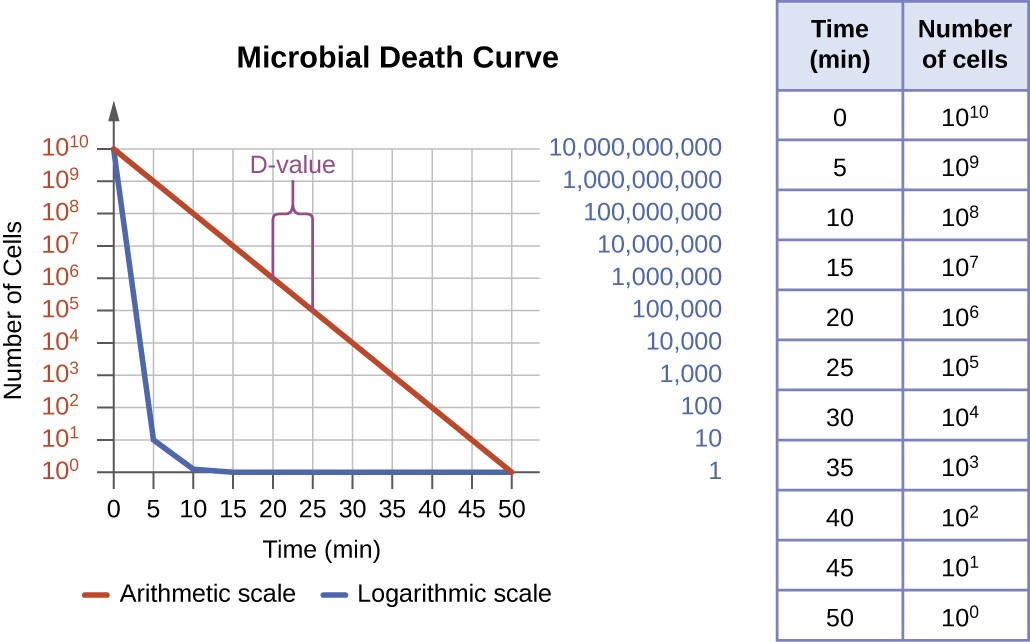
Microbial Characteristic
Many bactericides are more effective against gram-positive bacteria
Resistance of gram-negative bacteria is likely due to lipopolysaccharides in their outer membrane
Pseudomonas and Burkholderia are unusually resistant to many bactericides and antibiotics
Porins → selectively allow molecules into cells
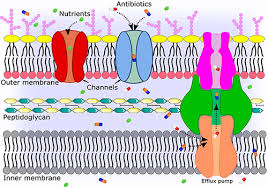
Modes of Action
Protein denaturation
Enzymes and their tertiary structure
Nucleic acid damage
Damage to lipids and proteins in cell membrane
Disruption of the membrane
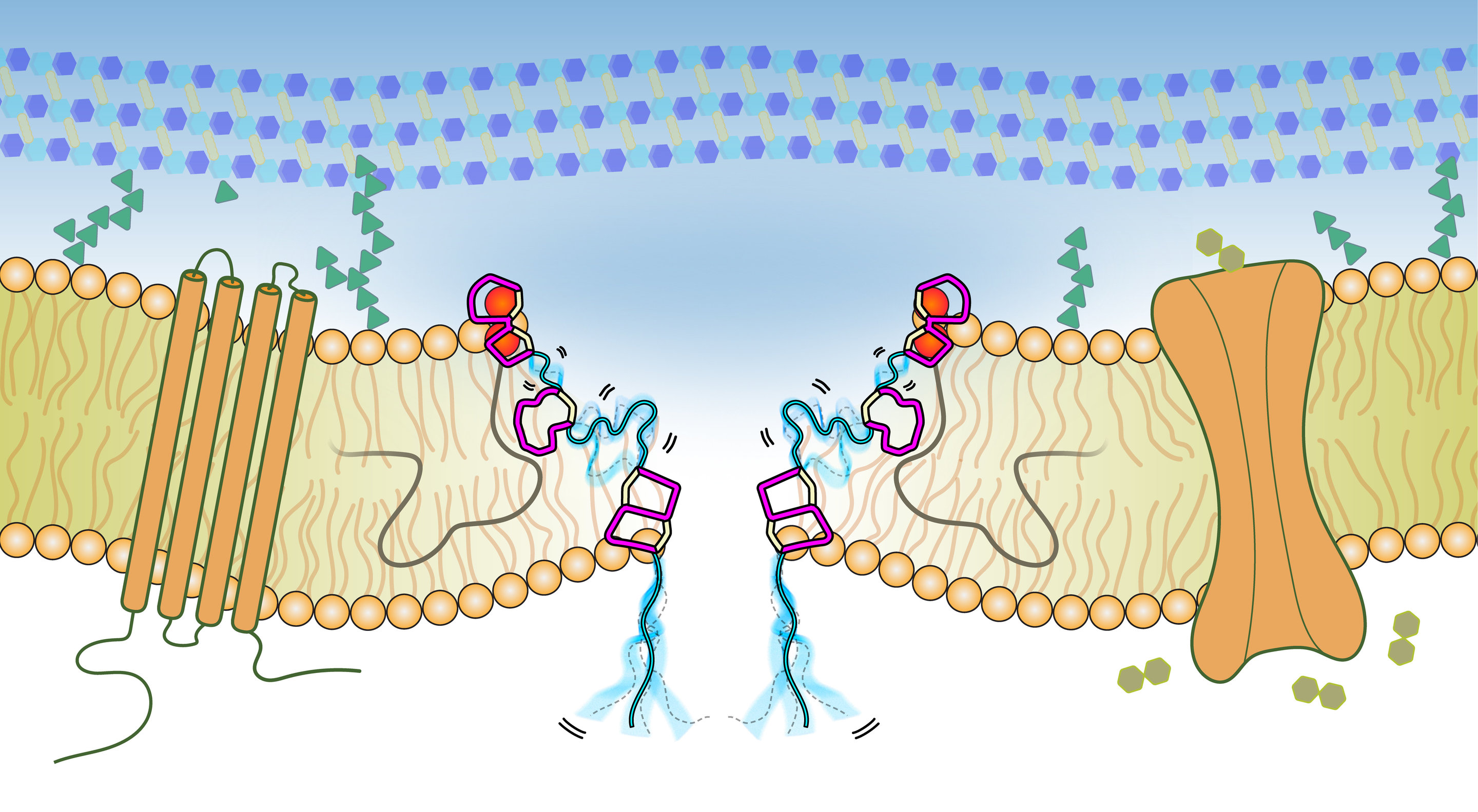
Physical Methods of Control
Temperature
Heat
Cold
Desiccation
Filtration
Osmotic pressure
Radiation
Temperature
Heat:
Moist heat
Boiling - 100 degrees celsius for 10 minutes
Kills vegetative cells (bacteria, fungi, protozoa, some viruses) Doesn’t kill endospores
Autoclave/steaming -
Heat & steam, 100 degrees celsius, 20-30 minutes. Kills everything except prions
Pasteurization
Dry heat
Ovens
Incineration
Flaming
Cold:
Refrigeration -
0 to 7 degrees celsius
Bacteriostatic, psychrophilic organisms can survive
Freezing -
< o degrees celsius
Slow freezing → crystals that form disrupt cellular structure
Freezing and thawing is more damaging
Osmotic Pressure
High concentrations of salt & sugar
Hypertonic environment
Water leaves microbial cells
Used for food preservation
NOT antifungal (mold)
Dessication
Drying
Bacteriostatic
No growth/reproduction - can remain viable
Spores and viruses remain viable
Resistance to desiccation varies from organism to organism
Neisseria gonorrhoeae (1 hour)
Mycobacterium Tuberculosis (Months)
Radiation
Ionizing radiation:
y-rays, x-rays
Used to treat food (Like produce)
Pharmaceuticals, dental supplies, and plastic medical supplies
Nonionizing UV radiation:
Strongly bactericidal
Damages DNA
Kills organisms in the air
Harmful to our skin + eyes
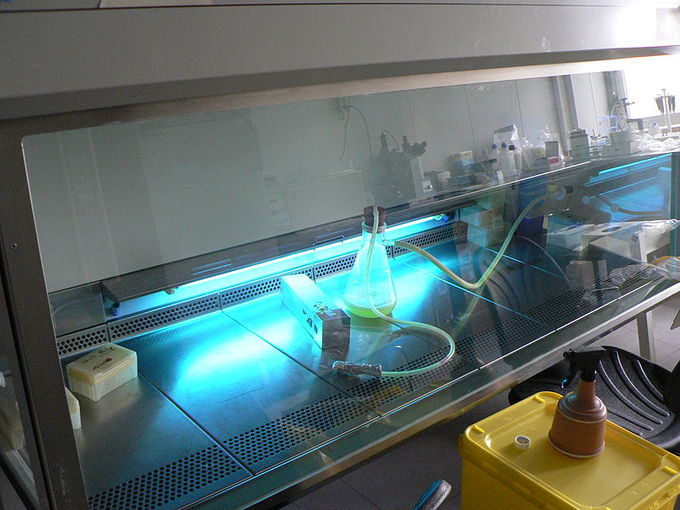
Chemical Methods of Control
Living tissue/inanimate objects
Most reduce the # of microorganisms to safe levels
Or remove vegetative forms of pathogens
No single disinfectant is good for all things
Label specifies what organisms it can combat
Concentration
Nature of the material being disinfected
Organic matter, blood and vomit, may interfere w/ the effectiveness of the disinfectant
Phenols, alcohols, halogens, metals, aldehydes, and oxidizers
Phenols
Denatures proteins and disrupts lipid membranes
Effective in dense organic material
Active for a long time
Throat sprays, Lysol
Cons:
Corrosive at high concentration
Irritant
Mutative
Bisphenols - Derivatives of phenols
Hexachlorophene
Surgical lotion
Triclosan
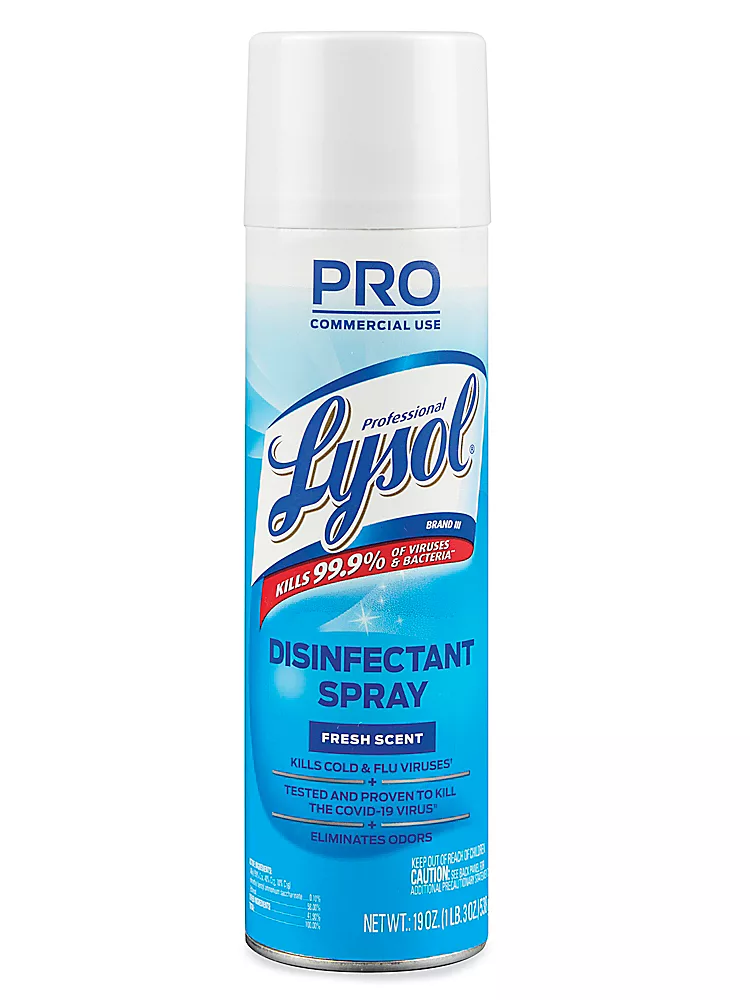
Alcohols
Denature proteins and dissolve lipids
Effective against:
Bacteria, fungi, and viruses
Ineffective against:
Endospores and fungal spores
Effective concentration = 60-70%
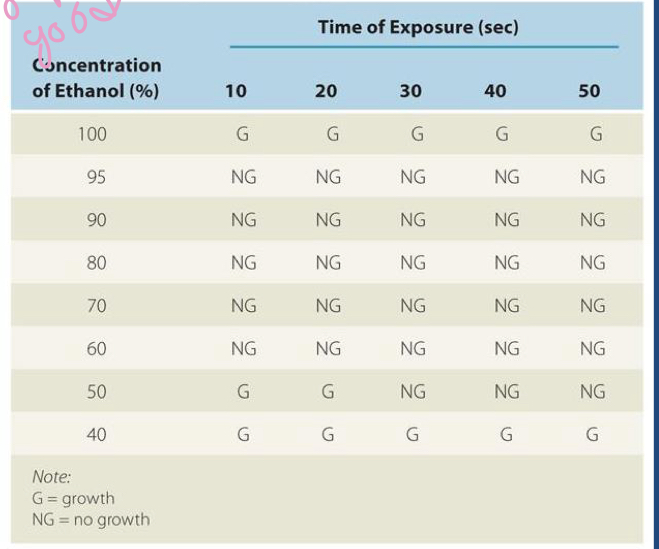
Halogens
Destabilize cellular macromolecules
Effective against:
Vegetative bacteria, bacterial + fungal spores, and protozoan cysts
Examples -
Iodine -
Oldest and most effective antiseptic
Skin wounds
Impairs cell membrane synthesis
Chlorine -
Bleach - NaOCl
Can clean drinking water w/ 1-2 drops after 30 min
Metals
Denatures proteins
Examples:
Ag - 1% silver nitrate - eyes of newborns to prevent infection
Hg -
Mercuric chloride (very toxic)
Merbromin was used as a topical antiseptic → not used anymore because of its mercury content
Cu -
Water based treatments to get rid of alagae
Xgel hand sanitizers
Aldehydes
Denatures proteins
Damages DNA + RNA
Examples:
Formaldehyde -
Formalin (37%) preserves biological samples
Not used on living tissue → irritant and carcinogenic
Glutaraldehyde -
Less irritating and more effective than formaldehyde
Disinfectant in hospitals (surgical equipment)
3-10 hours kill endospores
Oxidizers
Oxidizing agents
Effective against anaerobes
Deep wounds
High conc. can kill spores on surfaces
Examples:
Peroxides, H2O2
Peracetic Acid
Evaluating disinfectants
Dilution test -
Meta/glass beads dipped in bacteria and then dried
Dried cultures are placed in disinfectant for 10-20 minutes
Beads were then transferred to culture media to see if bacteria survived
Disk diffusion method -
Disk filters soaked w/ the chemical being tested
Placed on agar plates already inoculated w/ bacteria tested
Incubated and analyzed for bacterial growth